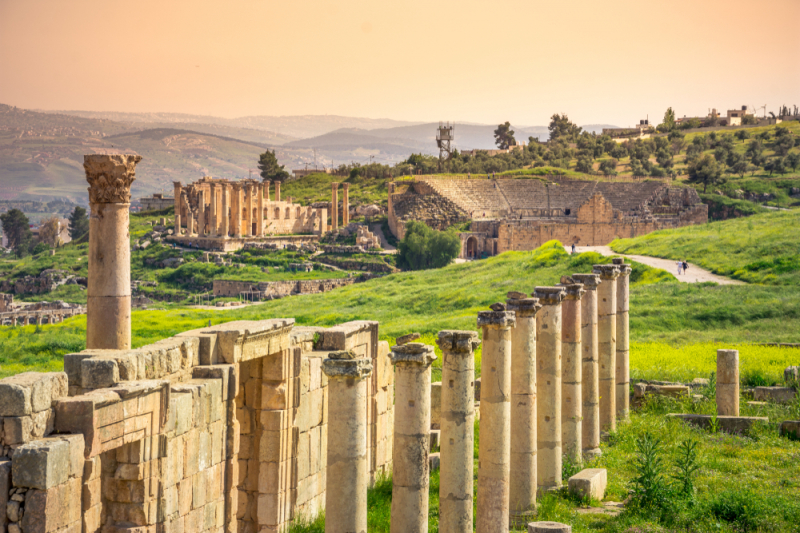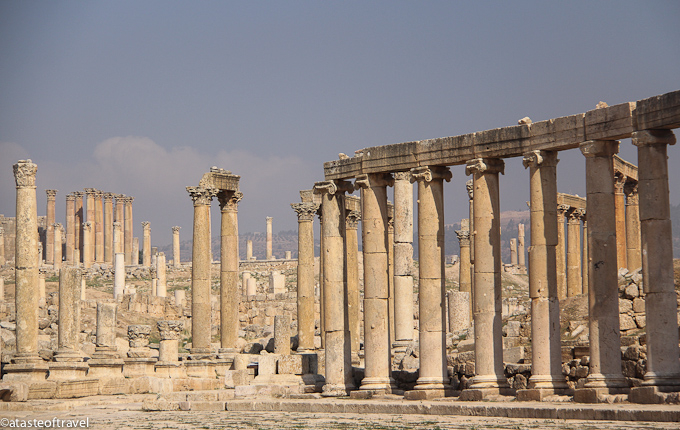Jerash
Jerash is one of the best preserved ancient Roman sites in the world. Jerash, formerly known as Gerasa, is thought to have been inhabited since the Neolithic Era. However, it is the spectacular Roman city created in Jerash that has made the most of an impression on the area, becoming Jordan's second most visited tourist site after Petra.
Following General Pompey's conquest of the region in 64 BC, Jerash became part of the Roman province of Syria. Later, it became one of the ten cities of the Decapolis league, flourishing and increasing wealthier over the two centuries of Roman control.
During this period, Jerash experienced many rounds of reconstruction, the majority of which took place in the first century AD. One such incident occurred in 129 AD, following the Emperor Hadrian's visit. Following this visit, Hadrian's Arch, also known as the 'Triumphal Arch,' was built, the remnants of which may still be seen in the southern portion of Jerash outside the archeological park.
By the third century AD, Jerash had achieved its zenith as a prosperous commercial center with a population of up to 20,000 people, earning it the designation of colony. However, this success was soon followed by Jerash’s slow downfall.
Several events during the ensuing decades contributed to Jerash's decline, including the destruction of Palmyra in 273 AD, pillaging of its temples to build Christian churches under Emperor Justinian in the 6th century, and Muslim invasion of the region in the 7th century. This was aggravated further by an earthquake in 747 AD. In truth, despite a brief Crusader occupation in the 12th century, Jerash had collapsed and was forsaken by the 13th century.
Tourists go to Jerash to explore the enormous and spectacular remains, which include the Temple of Artemis and the Forum with its large ionic columns. The Cardo, Jerash's original main thoroughfare, runs through the center of the complex and is intriguing in its own right, with evident chariot markings and an underground drainage system. Other must-see attractions in Jerash are the 3,000-seat South Theatre and the Nymphaeum fountain.












